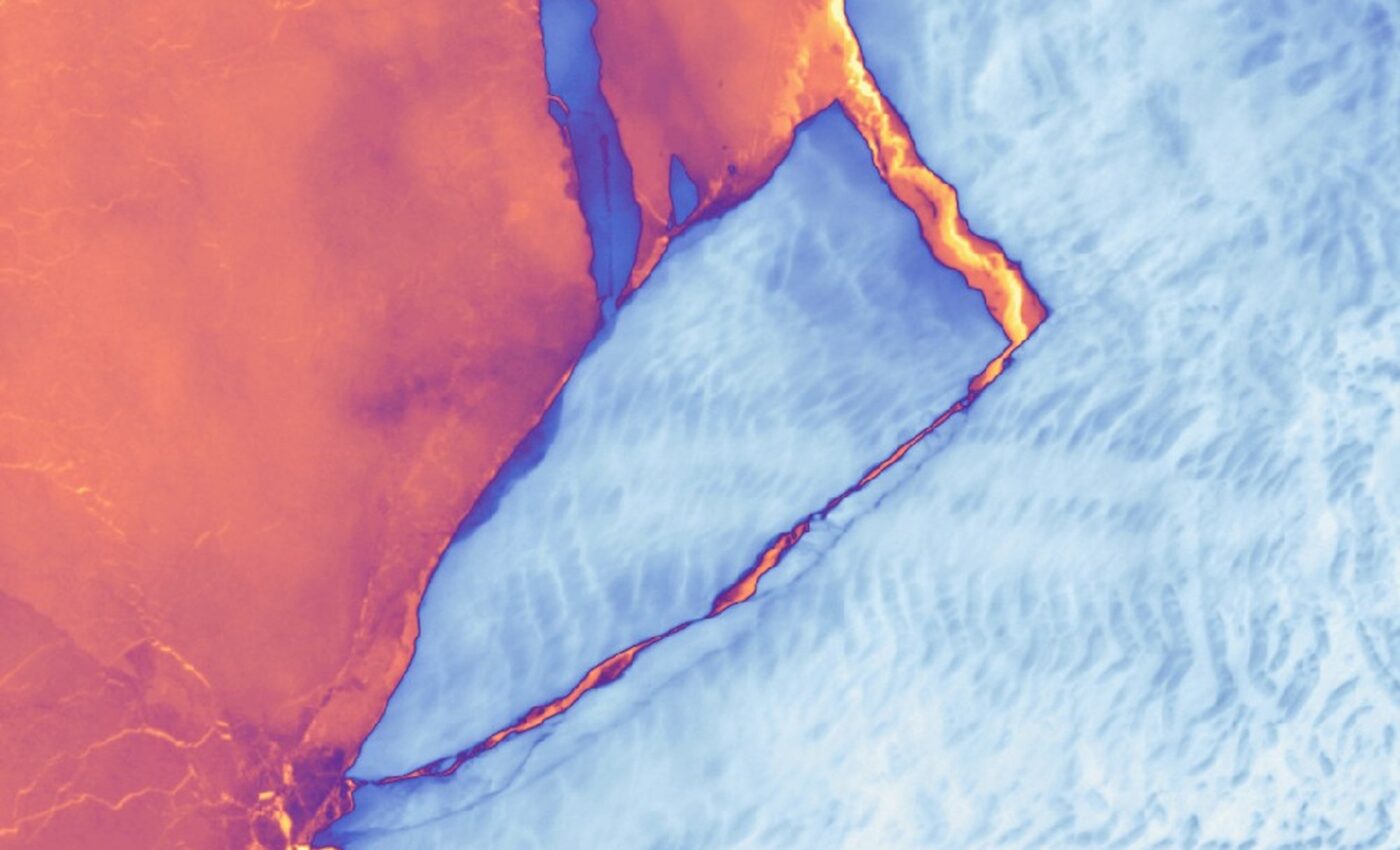
Birth of an iceberg: A-83 breaks free from Antarctica
New images reveal the birth of a massive iceberg in the Antarctic, comparable in size to the Isle of Wight. The iceberg, named A-83, spans 146 square miles (380 square km) and is about 490 feet (150 meters) thick.
The iceberg separated from the Brunt Ice Shelf last week, following the appearance of a new crack spotted in satellite images. According to the British Antarctic Survey (BAS), ocean currents now control A-83’s movement.
Cracks in the Brunt Ice Shelf
The Brunt Ice Shelf, named after Welsh meteorologist David Brunt, has experienced several icebergs breaking away in recent years. This latest iceberg calved after a vertical crack merged with an existing horizontal crack, resembling scissors cutting paper.
The horizontal crack, known as Halloween Crack, was discovered on October 31, 2016, while the vertical crack, 8.6 miles long (14 km), was only spotted on April 26 this year. BAS experts, using satellite and GPS data, confirmed the final separation in the early hours of Monday, May 20.
“This calving was expected since the appearance of Halloween Crack eight years ago,” said Oliver Marsh, a glaciologist at BAS. “It reduces the total area of the ice shelf to its smallest extent since monitoring began.”
Natural processes formed the cracks
Ice shelves are floating ice platforms connected to a landmass, found in polar regions like Antarctica and Greenland. Although ice shelf melting is linked to global warming, BAS notes that the cracks leading to iceberg A-83 formed through natural processes.
According to Marsh, the iceberg’s detachment resulted from the Brunt Ice Shelf’s movement towards the McDonald Ice Rumples, a fixed point on the seafloor.
“Over time this created a bending stress in the ice to the north of Halloween Crack which increased until it exceeded a critical value,” said Marsh. “This type of calving is just one of the mechanisms through which the ice sheet loses mass to stay in balance with the year-round snowfall.”
Research monitoring station
The Brunt Ice Shelf also hosts BAS’s Halley VI research station, crucial for monitoring. Halley VI comprises eight units on skis, allowing relocation from the ice shelf edge when necessary.
In 2016, BAS experts moved the base 14 miles inland to avoid it drifting away on an iceberg that later broke off in January 2023. Currently unstaffed, a new team will return to Halley VI in November.
The research conducted here is critical, contributing to our understanding of climate change, sea level rise, and the atmospheric phenomena.
Feeling the pressure
“Although iceberg calving is normal, the Brunt Ice Shelf is feeling the same pressures as elsewhere around Antarctica, including low sea ice conditions. When less sea ice is present, ice shelves are more exposed to destabilizing wind and wave action,” noted NASA.
“The remainder of the Brunt is still holding on to the McDonald Ice Rumples. But the new Iceberg A-83, along with icebergs A-74 and A-81 that broke off in recent years, have greatly diminished the ice shelf’s area since early 2021.”
The future of the Brunt Ice Shelf
Christopher Shuman is a University of Maryland glaciologist based at NASA’s Goddard Space Flight Center.
“As ice shelves get smaller and smaller, they become more vulnerable to extreme events that can, as in the case of the Glenzer/Conger Ice Shelf, lead to destabilization and total loss of the floating glacial ice area,” said Shuman.
NASA noted that the Brunt Ice Shelf still has fractures on its surface, such as Chasm 2, that will continue to play a role in the evolution of the ice platform. “Data from Landsat collected year-round, along with insights from other sensors, will help scientists make sense of that future.”
More about the Brunt Ice Shelf
Brunt Ice Shelf is located off the coast of Antarctica in the Weddell Sea. It extends from Coats Land in the west to Queen Maud Land in the east.
The ice shelf is particularly interesting to scientists because of its dynamic nature. It is constantly changing due to processes such as calving, and the formation of icebergs such as A-83.
These events could potentially alter the landscape of the shelf dramatically and have implications for global sea levels, although the ice shelf itself, being already afloat, does not contribute to sea level rise when ice breaks off.
Image Credit: NASA Earth Observatory
—–
Like what you read? Subscribe to our newsletter for engaging articles, exclusive content, and the latest updates.
Check us out on EarthSnap, a free app brought to you by Eric Ralls and Earth.com.
—–













